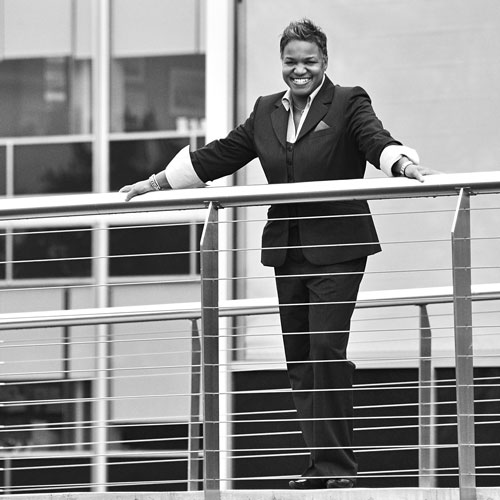Mike Ellery has spent the last two decades developing unrivaled expertise in event design and marketing. As chief creative officer at Sparks, the native Australian is leveraging technology and helping an atypical agency build dynamic experiences unlike anything the event world has seen before.

Over the last ten years, Sparks has transitioned from a “build” to a “think + build” company. “We could always build amazing spaces, but we’ve moved beyond that to create engaging, purposeful experiences and environments that match the needs and goals of a specific brand,” Ellery says.
A great example of this goal was Sapphire Now 2014, SAP’s industry-leading technology conference. The creative teams at Sparks, in collaboration with a savvy client, built a massive networking space stuffed with lounges, a keynote stage, presentation theaters, vending machines, and interactive SAP displays. Once, industry professionals attended three-day events to passively download information, but the stunning show-floor upgrade helped SAP engage today’s mobile worker. “We did well for SAP because we had intimate knowledge of their brand and of the venue. It takes both to make a great event,” Ellery says.
While Sparks is leading in the event space, the agency is about much more. “Everything we do comes down to branding, and how we can translate that brand in the most effective way in the right environment,” Ellery says. The company specializes in events, trade shows, and custom retail designs.
As a leader, Ellery looks to empower and encourage his creative team members, who work as specialists for specific Sparks clients. “This industry has so many pressures and deadlines, but we believe work should be fun,” he explains. “We can train you to think and to work, but we can’t train you to be a good person. We look for good people, we put them on a good team, and then we support them. That’s how we make sure we deliver the best product possible.”
“Do you want your audience spoon-fed, of do you want them to actually spend time thinking about what you’ve said?”
At Sparks, job titles are often ignored as leaders expect others to jump in with both feet no matter the task. “Nobody puts barriers in the way, and we stress collaboration,” Ellery says. “Everyone is visible. It’s flat, efficient, agile, and fun.”
In twenty years, Ellery has learned to ask clients probing questions to elicit the information—the information that will inform his approach. Questions like, “How do you define success?” or, “What is one undeniable thing about your brand?” or, “What is the major misconception about your brand?” Next, they approach the brand’s target audience, competitors, and industry experts, using surveys and other means to discover how other parties view the brand.
Armed with that information, a Sparks creative team translates the strategy into an experience, environment, graphic, display, or interface. In doing so, they strive to resonate while retaining a certain amount of ambiguity. “Do you want your audience spoon fed, or do you want them to actually spend time thinking about what you’ve said?” Ellery says. The goal is not to replace face-to-face interactions, rather, Sparks looks to enhance them. After all, live events are still about people.
Sparks showcases its philosophy in action at several of Verizon’s “destination” stores across the country. The stores feature interactive zones built by Sparks, and the agency also collaborated on production, technology, and material selection. One zone in a California store boasts a selfie station, an interactive soccer zone that sends analytics to users’ smartphones, and an NFL virtual reality experience. A videogaming wall with eighty HD screens lets visitors face off while others try their hand at a DJ mixing board or a wall of sound. Touch screens give customers the chance to compare Verizon products.
On the heels of Sparks’s recent triumphs, Ellery is pressing forward. That’s because there is so much more to do, he says. Today, he’s investigating ways to incorporate new beacon technologies that trigger mobile device events based on proximity. He’s also experimenting more with augmented reality. “What if a once-boring shuttle ride to an expo can become a significant experience through technology,” he says. “We’re always looking for new ways to take technology and apply it in a fun, educational, or meaningful way. The possibilities are endless.”

